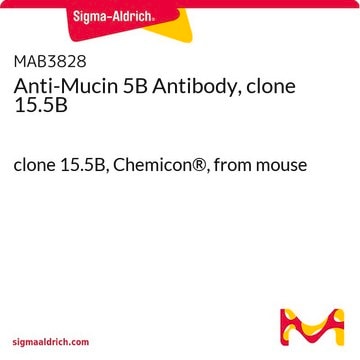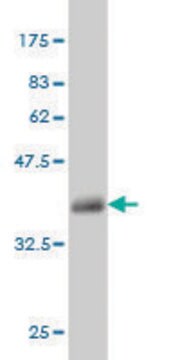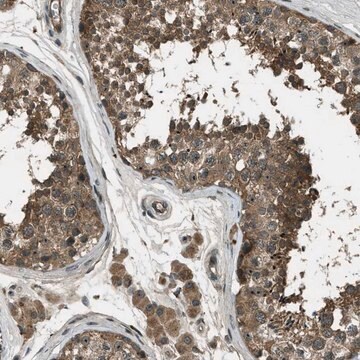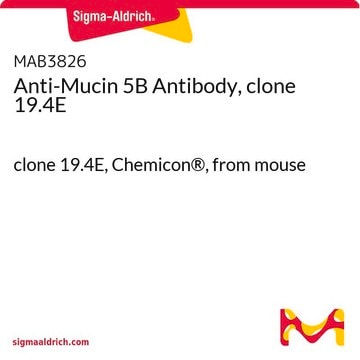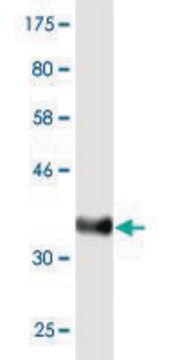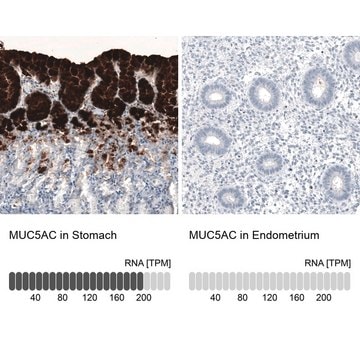MAB2011
Anti-Mucin MUC5AC Antibody, clone CLH2
clone CLH2, Chemicon®, from mouse
Synonym(s):
Gastric Mucin
About This Item
Recommended Products
biological source
mouse
Quality Level
antibody form
purified immunoglobulin
antibody product type
primary antibodies
clone
CLH2, monoclonal
species reactivity
human
manufacturer/tradename
Chemicon®
technique(s)
ELISA: suitable
immunocytochemistry: suitable
immunohistochemistry: suitable (paraffin)
immunoprecipitation (IP): suitable
western blot: suitable
isotype
IgG1
NCBI accession no.
UniProt accession no.
shipped in
wet ice
target post-translational modification
unmodified
Gene Information
human ... MUC5AC(4586)
General description
Specificity
Immunoreactivity of MAB2011 has been detected in the following normal human epithelial tissues: bronchus, endocervix, stomach, and gallbladder. The predominant staining pattern in normal tissues is perinuclear. Antibody reactivity has been observed in foveolar and mucopeptic neck cells of normal gastric mucosa. The expression of MUC5AC has been frequently observed in gastric carcinomas and may be used as a marker of gastric differentiation.
The CLH2 antibody shows a weak reactivity with a high molecular weight smear characteristic of mucin from native mucin extract from normal gastric mucosa and from gastric diffuse carcinoma .
The antibody was generated by immunizing mice with a synthetic tandem repeat peptide The antibody recognizes the sequence TTSTTSAP within the tandem repeat of MUC5AC (1). It further recognizes glycosylated as well as unglycosylated MUC5AC.
Immunogen
Application
Apoptosis & Cancer
Tumor Markers
Immunocytochemistry
Immunohistochemistry. Effective on frozen and paraffin sections at 1:1000-1:2000 dilution.
ELISA
Immunoprecipitation
Optimal working dilutions must be determined by end user.
Physical form
Storage and Stability
Legal Information
Disclaimer
Not finding the right product?
Try our Product Selector Tool.
Storage Class Code
10 - Combustible liquids
WGK
WGK 2
Flash Point(F)
Not applicable
Flash Point(C)
Not applicable
Certificates of Analysis (COA)
Search for Certificates of Analysis (COA) by entering the products Lot/Batch Number. Lot and Batch Numbers can be found on a product’s label following the words ‘Lot’ or ‘Batch’.
Already Own This Product?
Find documentation for the products that you have recently purchased in the Document Library.
Our team of scientists has experience in all areas of research including Life Science, Material Science, Chemical Synthesis, Chromatography, Analytical and many others.
Contact Technical Service
